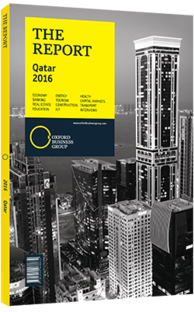Population increase in Qatar drives infrastructure investment
Qatar enjoys one of the highest GDP per capita rankings in the world thanks largely to the wealth generated from oil and gas revenues, averaging approximately $100,000 per person. In addition to the local population experiencing one of the most rapid accumulations of wealth in the past century, the total population of the country has also grown substantially, in large part due to the influx of foreign workers needed to fuel economic expansion and, in particular, help build infrastructure.
The population of Qatar, including both nationals and foreigners, was approximately 2.52m at the end of March 2016, according to figures from the Ministry of Development Planning and Statistics (MDPS). The total population in March 2015 was approximately 2.34m, a 7.8% increase year-on-year from 2014. However, Qatar’s last major census was conducted in 2010. Foreigners make up approximately 90% of the country’s total population. The largest national groups in order of size are Indians, Nepalese, Filipinos, Egyptians, Bangladeshis, Sri Lankans and Pakistanis.
Census 2015
Due to the rapidly increasing population, and at the recommendation of the UN, the MDPS conducted a mini-census in 2015. Results show that the total population increased by 40% since the 2010 census was conducted. Results from 2015 indicate the population was 2.4m, up from 1.7m recorded five years prior. This equates to a 7.2% annual average increase in the total population This trend can be largely attributed to the growing foreign workforce, and in particular the labour required to fuel Qatar’s current infrastructure drive.
Data from the 2015 census indicated the total male population increased from 1.28m to 1.81m, accounting for 530,000 of the 700,000 people added to the total population in the past five years. The female population in the country rose by 587,000, indicating that both the male and female population have grown at roughly the same average annual rate. The ratio of three men to every woman was consistently maintained between 2010 and 2015.
The MDPS noted that the population is expected to peak at the beginning of 2017 and will start declining in the first half of 2017. This is due to several factors; the first is that budget cuts, due to reduced revenue from oil and gas prices, have already had an impact on the state’s population. This resulted in a number of layoffs in the energy sector in 2015-16, and staff reductions have been felt across several other sectors. The second factor is that the majority of infrastructure projects have already been prioritised and construction work will start winding down, meaning fewer labourers will be required.
Workforce
According to a labour force report released in the third quarter of 2015 by the MDPS, some 78% of the population was considered economically active. The population aged 15 years old and above was recorded at 2.12m, indicating an 88% labour force participation rate. Of the total population aged 15 and above, a total of 191,665 Qataris were recorded in the report, with 93,886 males and 97,779 females. Of the total Qatari population, 99,923 were listed as economically active, with 91,742 listed as economically inactive. Approximately 68% of Qatari males aged 15 and above and 36% of Qatari women aged 15 and above were economically active, according to MDPS statistics.
Of the economically inactive Qatari male population, the majority were either classified as students or retired, and of the economically inactive Qatari female population, the majority were either students or homemakers. The total number of unemployed Qataris – those who are actively seeking work – was only 780. Approximately 1.93m people were recorded as non-Qatari in the report, of which 1.58m were male. Statistics indicated that 98% of the non-Qatari male population and 65% of the non-Qatari female population were economically active.
You have reached the limit of premium articles you can view for free.
Choose from the options below to purchase print or digital editions of our Reports. You can also purchase a website subscription giving you unlimited access to all of our Reports online for 12 months.
If you have already purchased this Report or have a website subscription, please login to continue.

